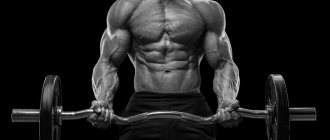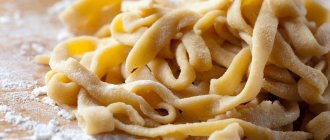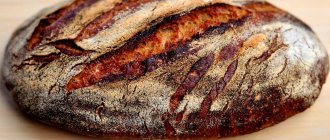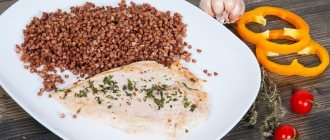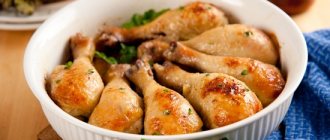Chicken is one of the most commonly consumed meat products around the world. It is especially popular among weight watchers because it is an excellent source of protein. Products containing high levels of protein are indispensable aids in building muscle mass and losing weight.
However, chicken comes in a variety of cuts, including breasts, thighs, wings, and drumsticks. These parts contain different amounts of protein, fat and calories, so each of them has its own purpose.
In this article, I'll talk about how much protein is found in different parts of a chicken, including the breast, thighs, wings, and drumsticks.
Chicken breast
The breast is one of the most popular parts of chicken.
Chicken breast cooked without skin contains: 31 grams of protein and 165 calories per 100 grams of product. 80% of calories come from protein and 20% from fat.
Chicken breast is especially popular among bodybuilders and those who want to lose weight. Its high protein level and low calorie content means you can eat it in large quantities without fear of gaining excess fat.
One chicken breast contains on average 54 grams of protein and 284 calories.
How many calories are in a baked chicken thigh?
Compared to animal meat, chicken is lower in calories, which is why it is included in many diets. Poultry meat is not uniform—a dry, fibrous breast has fewer calories than a juicy thigh. But it is this that many consider the most delicious part of the bird. The thigh is an enlarged part of the leg located above the lower leg. The meat adheres to a small bone and is relatively dark in color.
Chicken thigh
A cooked, skinless, boneless thigh contains 26 grams of protein and 209 calories per 100 grams of product. 53% of calories come from protein and 47% from fat.
Interestingly, chicken thighs are a slightly darker color than chicken breasts. This is because chicken legs are more active and contain more myoglobin. It helps provide oxygen to active muscles and also makes them darker.
Some people believe that the dark color of chicken thighs gives them a juicier flavor.
One chicken thigh contains 13.5 grams of protein and 109 calories on average.
Calorie content Chicken thigh fillet without skin. Chemical composition and nutritional value.
Nutritional value and chemical composition of “Chicken thigh fillet without skin.”
The table shows the nutritional content (calories, proteins, fats, carbohydrates, vitamins and minerals) per 100 grams of edible portion.
| Nutrient | Quantity | Norm** | % of the norm in 100 g | % of the norm in 100 kcal | 100% normal |
| Calorie content | 136 kcal | 1684 kcal | 8.1% | 6% | 1238 g |
| Squirrels | 13.6 g | 76 g | 17.9% | 13.2% | 559 g |
| Fats | 7 g | 56 g | 12.5% | 9.2% | 800 g |
| Carbohydrates | 0.4 g | 219 g | 0.2% | 0.1% | 54750 g |
| Water | 75.46 g | 2273 g | 3.3% | 2.4% | 3012 g |
| Ash | 0.96 g | ~ | |||
| Vitamins | |||||
| Vitamin A, RE | 16 mcg | 900 mcg | 1.8% | 1.3% | 5625 g |
| Retinol | 0.016 mg | ~ | |||
| Vitamin B1, thiamine | 0.073 mg | 1.5 mg | 4.9% | 3.6% | 2055 g |
| Vitamin B2, riboflavin | 0.142 mg | 1.8 mg | 7.9% | 5.8% | 1268 g |
| Vitamin B4, choline | 65.7 mg | 500 mg | 13.1% | 9.6% | 761 g |
| Vitamin B5, pantothenic | 1.058 mg | 5 mg | 21.2% | 15.6% | 473 g |
| Vitamin B6, pyridoxine | 0.43 mg | 2 mg | 21.5% | 15.8% | 465 g |
| Vitamin B9, folates | 7 mcg | 400 mcg | 1.8% | 1.3% | 5714 g |
| Vitamin B12, cobalamin | 0.37 mcg | 3 mcg | 12.3% | 9% | 811 g |
| Vitamin C, ascorbic acid | 2.3 mg | 90 mg | 2.6% | 1.9% | 3913 g |
| Vitamin D, calciferol | 0.1 mcg | 10 mcg | 1% | 0.7% | 10000 g |
| Vitamin D3, cholecalciferol | 0.1 mcg | ~ | |||
| Vitamin E, alpha tocopherol, TE | 0.21 mg | 15 mg | 1.4% | 1% | 7143 g |
| Vitamin K, phylloquinone | 1.8 mcg | 120 mcg | 1.5% | 1.1% | 6667 g |
| Vitamin RR, NE | 8.239 mg | 20 mg | 41.2% | 30.3% | 243 g |
| Betaine | 8.5 mg | ~ | |||
| Macronutrients | |||||
| Potassium, K | 229 mg | 2500 mg | 9.2% | 6.8% | 1092 g |
| Calcium, Ca | 12 mg | 1000 mg | 1.2% | 0.9% | 8333 g |
| Magnesium, Mg | 25 mg | 400 mg | 6.3% | 4.6% | 1600 g |
| Sodium, Na | 77 mg | 1300 mg | 5.9% | 4.3% | 1688 g |
| Phosphorus, P | 173 mg | 800 mg | 21.6% | 15.9% | 462 g |
| Microelements | |||||
| Iron, Fe | 0.89 mg | 18 mg | 4.9% | 3.6% | 2022 |
| Manganese, Mn | 0.019 mg | 2 mg | 1% | 0.7% | 10526 g |
| Copper, Cu | 53 mcg | 1000 mcg | 5.3% | 3.9% | 1887 |
| Selenium, Se | 15.7 mcg | 55 mcg | 28.5% | 21% | 350 g |
| Zinc, Zn | 1.54 mg | 12 mg | 12.8% | 9.4% | 779 g |
| Essential amino acids | |||||
| Arginine* | 1.29 g | ~ | |||
| Valin | 1.061 g | ~ | |||
| Histidine* | 0.664 g | ~ | |||
| Isoleucine | 1.13 g | ~ | |||
| Leucine | 1.605 g | ~ | |||
| Lysine | 1.818 g | ~ | |||
| Methionine | 0.592 g | ~ | |||
| Threonine | 0.904 g | ~ | |||
| Tryptophan | 0.25 g | ~ | |||
| Phenylalanine | 0.849 g | ~ | |||
| Nonessential amino acids | |||||
| Alanin | 1.167 g | ~ | |||
| Aspartic acid | 1.907 g | ~ | |||
| Glycine | 1.051 g | ~ | |||
| Glutamic acid | 3.204 g | ~ | |||
| Proline | 0.88 g | ~ | |||
| Serin | 0.736 g | ~ | |||
| Tyrosine | 0.722 g | ~ | |||
| Cysteine | 0.274 g | ~ | |||
| Sterols (sterols) | |||||
| Cholesterol | 70 mg | max 300 mg | |||
| Saturated fatty acids | |||||
| Saturated fatty acids | 0.79 g | max 18.7 g | |||
| 12:0 Lauric | 0.01 g | ~ | |||
| 14:0 Miristinovaya | 0.02 g | ~ | |||
| 16:0 Palmitinaya | 0.53 g | ~ | |||
| 18:0 Stearic | 0.22 g | ~ | |||
| Monounsaturated fatty acids | 0.9 g | min 16.8 g | 5.4% | 4% | |
| 16:1 Palmitoleic | 0.12 g | ~ | |||
| 18:1 Oleic (omega-9) | 0.76 g | ~ | |||
| 20:1 Gadoleic (omega-9) | 0.01 g | ~ | |||
| Polyunsaturated fatty acids | 0.75 g | from 11.2 to 20.6 g | 6.7% | 4.9% | |
| 18:2 Linolevaya | 0.55 g | ~ | |||
| 18:3 Linolenic | 0.02 g | ~ | |||
| 20:4 Arachidonic | 0.08 g | ~ | |||
| 20:5 Eicosapentaenoic acid (EPA), Omega-3 | 0.01 g | ~ | |||
| Omega-3 fatty acids | 0.08 g | from 0.9 to 3.7 g | 8.9% | 6.5% | |
| 22:5 Docosapentaenoic acid (DPA), Omega-3 | 0.02 g | ~ | |||
| 22:6 Docosahexaenoic acid (DHA), Omega-3 | 0.03 g | ~ | |||
| Omega-6 fatty acids | 0.63 g | from 4.7 to 16.8 g | 13.4% | 9.9% |
The energy value of skinless chicken thigh fillet is 136 kcal.
Primary Source: Created in the application by the user. Read more.
** This table shows the average levels of vitamins and minerals for an adult. If you want to know the norms taking into account your gender, age and other factors, then use the “My Healthy Diet” application.
Frying thighs
This is, of course, the most unhealthy cooking method: fried chicken thighs will add as much as 245 kcal. But on the most solemn occasion, you can treat yourself to such a delicacy. About six washed thighs are rubbed with pepper and salt, wrapped in a bag and left overnight to marinate. You can skip this step, but the marinated ones will be much tastier. In a frying pan with a thick bottom, sunflower, odorless oil is heated to bubbles, chicken parts are placed and fried for five minutes, then turned over - and the procedure is repeated. With such turns, the process lasts about a third of an hour in total. When the juice begins to stand out clean, without blood, the thighs are smeared with grated garlic, the frying pan is covered for about ten minutes (for rest and flavoring), and the delicious meat is served for dinner.
Calorie content of boiled, fried, baked chicken: table per 100 grams
Chicken is a popular product that regularly appears on our tables. Many people like chicken fried or baked in the oven without oil, while others prefer it boiled or stewed.
As a rule, poultry meat is salted, but sometimes it is eaten without salt, replacing it with aromatic herbs and seasonings. The variety of chicken preparations is simply amazing. But what are the calories in chicken cooked in different ways? Let's find out more!
How you cook chicken matters
Chicken meat alone contains relatively low amounts of calories and fat compared to other meats. But once you start adding butter, sauce, batter and breading, the calories start adding up.
For example, a cooked skinless, boneless chicken thigh (52 grams) contains 109 calories and 5.7 grams of fat (2).
But the same battered chicken thigh contains 144 calories and 8.6 grams of fat. A chicken thigh fried in a flour coating contains even more, with 162 calories and 9.3 grams of fat (11, 12).
Similarly, one cooked boneless, skinless chicken wing (21 grams) contains 43 calories and 1.7 grams of fat (3).
However, a chicken wing baked in barbecue sauce contains 61 calories and 3.7 grams of fat. This compares to a wing fried in a flour coating, which contains 61 calories and 4.2 grams of fat (13, 14).
Which part of chicken is the healthiest?
The cut of chicken you should eat depends on your health and fitness goals. While all chicken bran is an excellent source of protein , some are leaner than others. Excess fat on the thighs and wings can help some goals but hinder others.
For example, if you are trying to lose weight, then chicken breast is the best option for you. This is the thinnest part of the chicken, which means it has the fewest calories and the most protein. However, people on a low-carb diet may benefit from eating more fatty cuts of chicken because they need more fat in their diet.
Additionally, if your goal is to build muscle or gain weight, you will have to consume more calories than your body needs on a daily basis. People in this group may benefit from fattier cuts of chicken as they contain more calories.
Calorie content
The calorie content of 100 g of raw chicken thigh is 185-211 kcal (depending on the fat content of the bird). To reduce this indicator, skin and fat should be removed from the product.
Poultry prepared in different ways has different caloric content per 100 g of product:
- raw thigh with skin – 185-211 kcal;
- raw thigh without skin – 150-170 kcal;
- boiled – 160 kcal;
- baked in the oven – 165 kcal;
- fried – 240-250 kcal;
- stew – 185 kcal.
How much protein is in each piece of chicken?
Breast
Chicken breast is one of the most popular varieties of chicken meat. For example, a cooked skinless breast weighing about 172 grams contains 54 proteins. This equates to 31 grams of protein per 100 grams.
Chicken breast also contains 284 calories, or 165 calories per 100 grams. 80% of calories come from protein and 20% from fat.
This cut of chicken is popular with bodybuilders and those looking to lose weight. Its high protein content and low calorie count make it a reason to eat it without worry.
Hip.
Chicken thigh is another very common cut that is slightly cheaper than chicken breast. Cooked boneless, skinless chicken thighs contain about 52 grams and 13.5 protein. This equates to 26 grams of protein per 100 grams.
This piece of chicken also contains 109 calories per thigh, or 209 calories per 100 grams. 53% of calories come from protein and 47% from fat.
Interestingly, the thighs are slightly darker than the chest. This is because chicken legs contain more myoglobin. This molecule helps supply oxygen to active muscles, giving them a redder color. Some people even find that dark chicken thighs make them taste juicier.
Leg
Free Yourself Skinless chicken leg contains 12.4 grams of protein . This amounts to 28 grams of protein per 100 grams. 70% of calories come from protein and 30% from fat.
Most people eat a skin-on chicken leg, which contains about 112 calories, of which 53% comes from protein and 47% from fat.
Wing
Chicken wings have three parts: the drumette, the wing and the tip; which is often eaten as a snack.
A Skinless chicken wing contains about 6.4 grams of protein. . This amounts to 30.5 grams of protein per 100 grams. Chicken wings also contain 42 calories. 64% of calories come from protein and 36% from fat.
However, most people eat chicken wings with the skin on. A chicken wing with skin contains 99 calories , with 39% of calories coming from protein and 61% from fat.
Bake in Madeira
Cooked in the oven, chicken thigh has a higher calorie content - as much as 216 kcal, so people on a diet rarely indulge. However, they also have holidays, and for such occasions, here is our recipe. A kilogram of thighs, washed, with the fat cut off, is placed in a greased form, sprinkled with salt and your favorite seasonings and “massaged” for their better distribution. Place skin side up. Then a glass of Madeira is poured out (you can also use dry wine, but the taste will not be the same), the mold is wrapped in foil and placed in the oven, where it spends half an hour at 210 Celsius. Next, the foil is removed, and the thighs are brought to a crust without it.
By the way, if you remove the skin, the calorie content of the dish will drop to 195 kcal.
Chicken thigh: calorie content and compliance with dietary nutrition. Fried and Braised Chicken Thighs
Proponents of dietary nutrition in ordinary poultry have always been more attracted by breasts than chicken thighs, which have a much higher calorie content. However, many people are turned off by the fillet due to its dryness - yet the majority prefer juicier meat. When fattier types of meat like pork and lamb are prohibited, I would like to at least get more pleasure from poultry! And here you can sometimes afford a chicken thigh - its calorie content can be reduced by skinning and cooking methods. Naturally, boiled meat was and remains the most dietary.


